Abstract
A series of experiments is reported in which two monkeys emitted complex response patterns, not specified by the experimental program, during the DRL component of a multiple schedule. Administration of sodium pentobarbital and dl-amphetamine, drugs which disrupted the DRL performance, were also observed to suppress these collateral responses. Sequences of these collateral responses appear to mediate, at least in part, the timing process required for reinforced performance on the DRL schedule.
Full text
PDF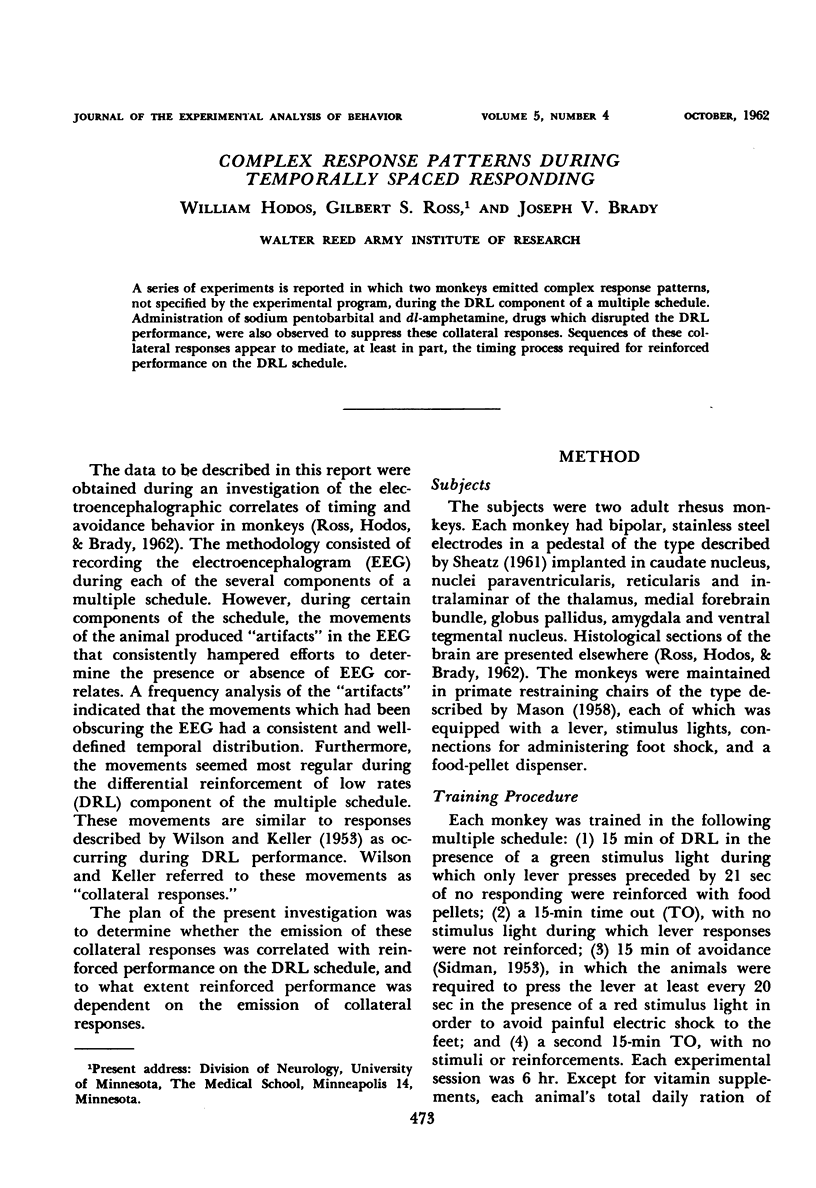
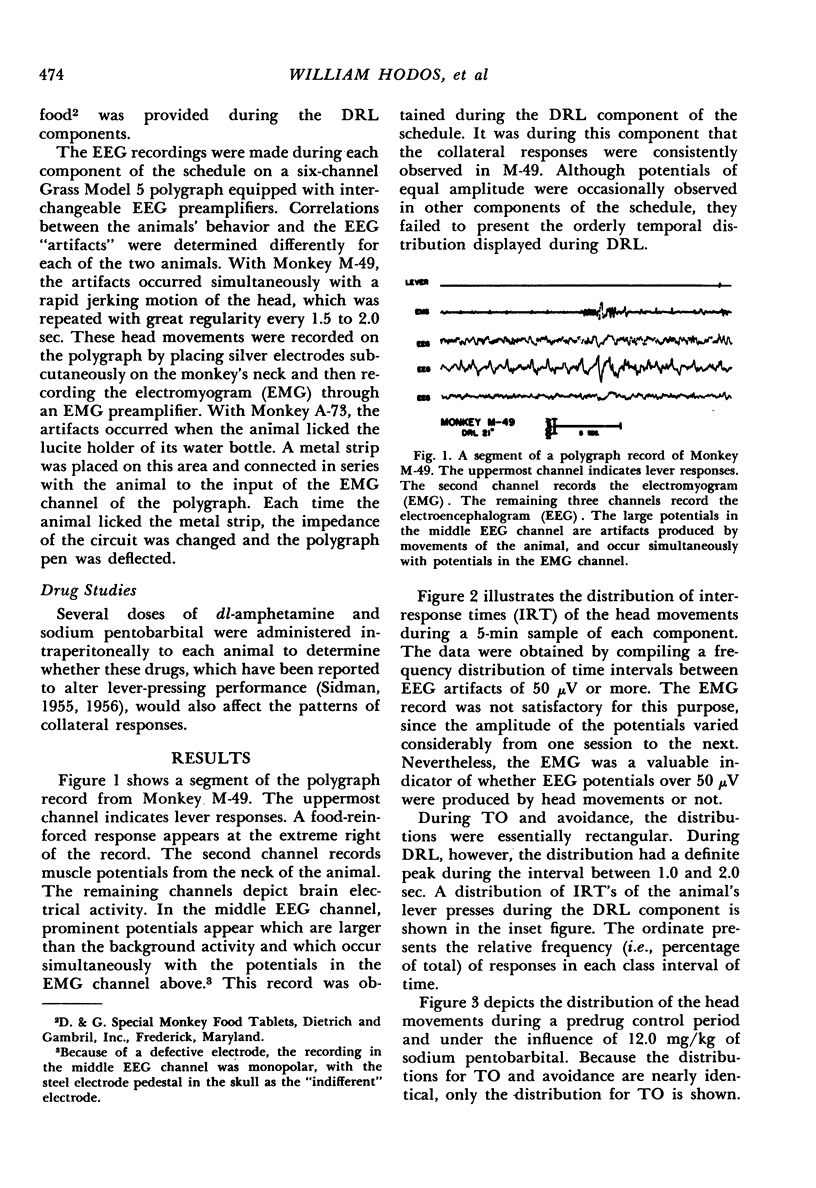
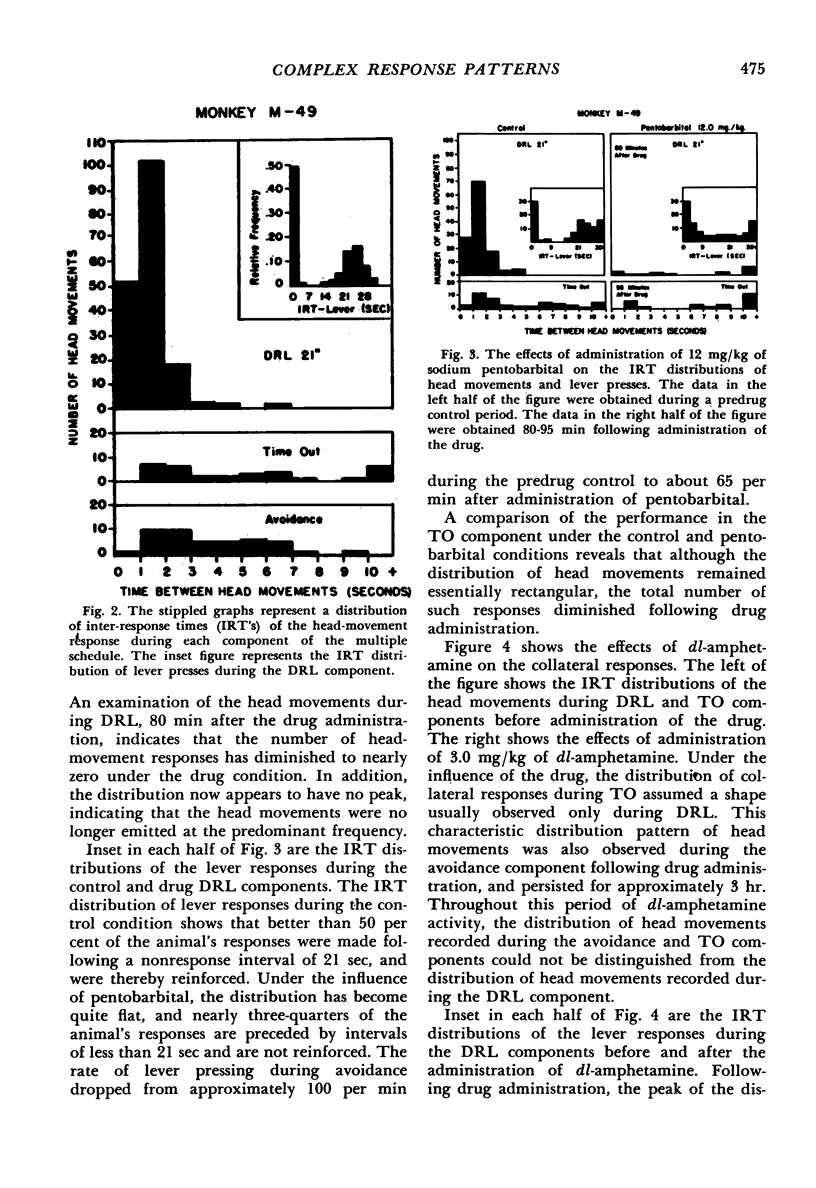
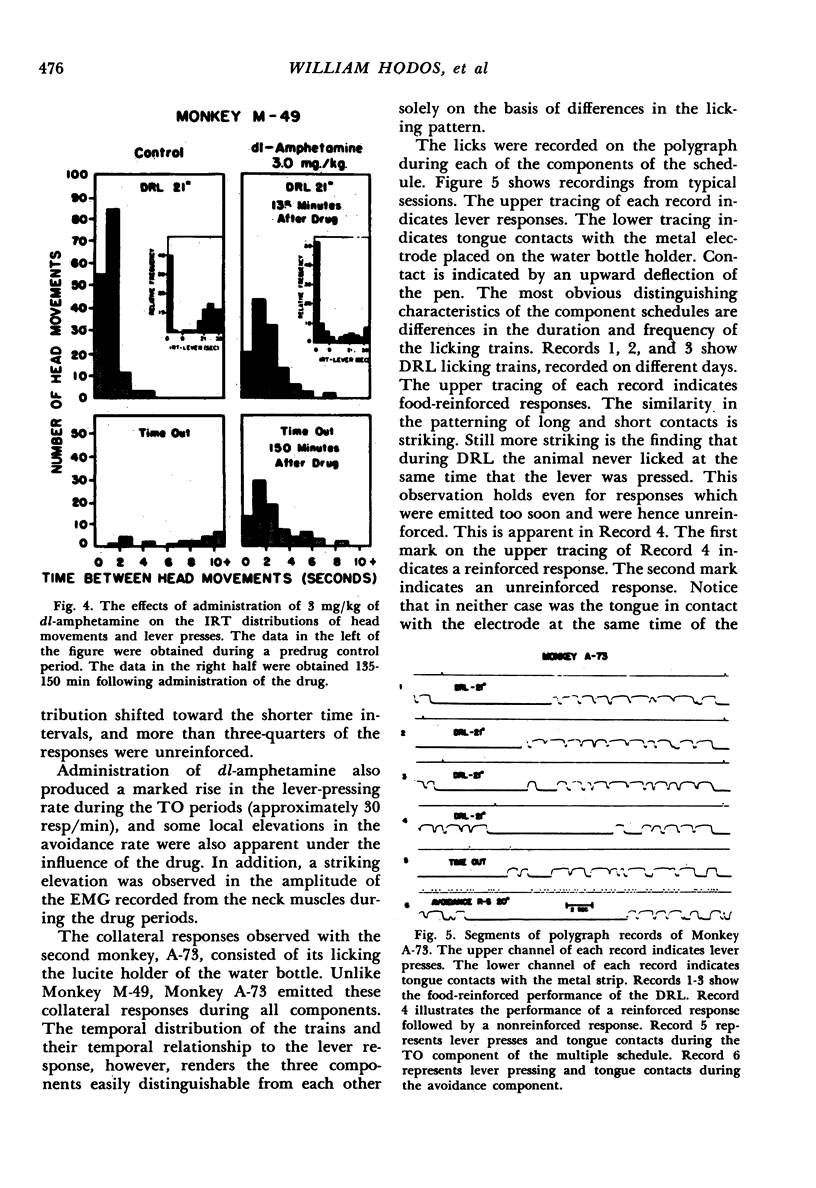
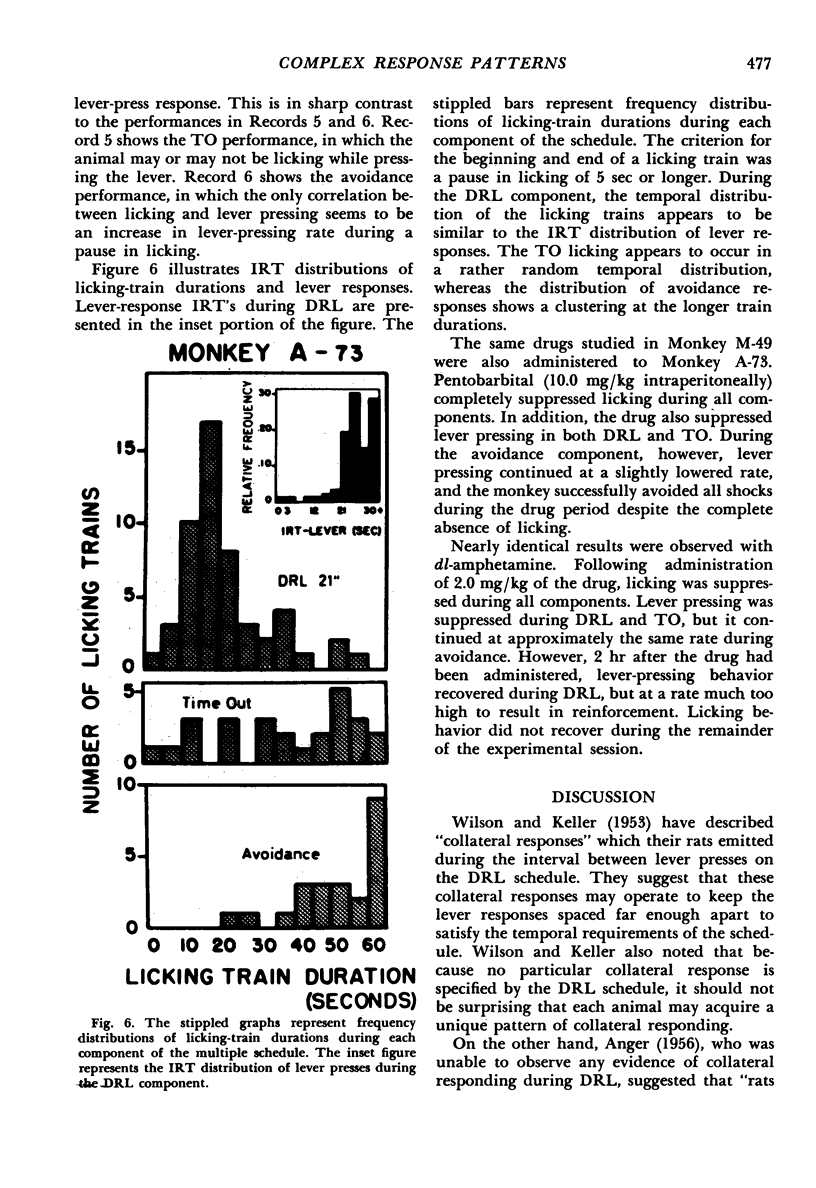
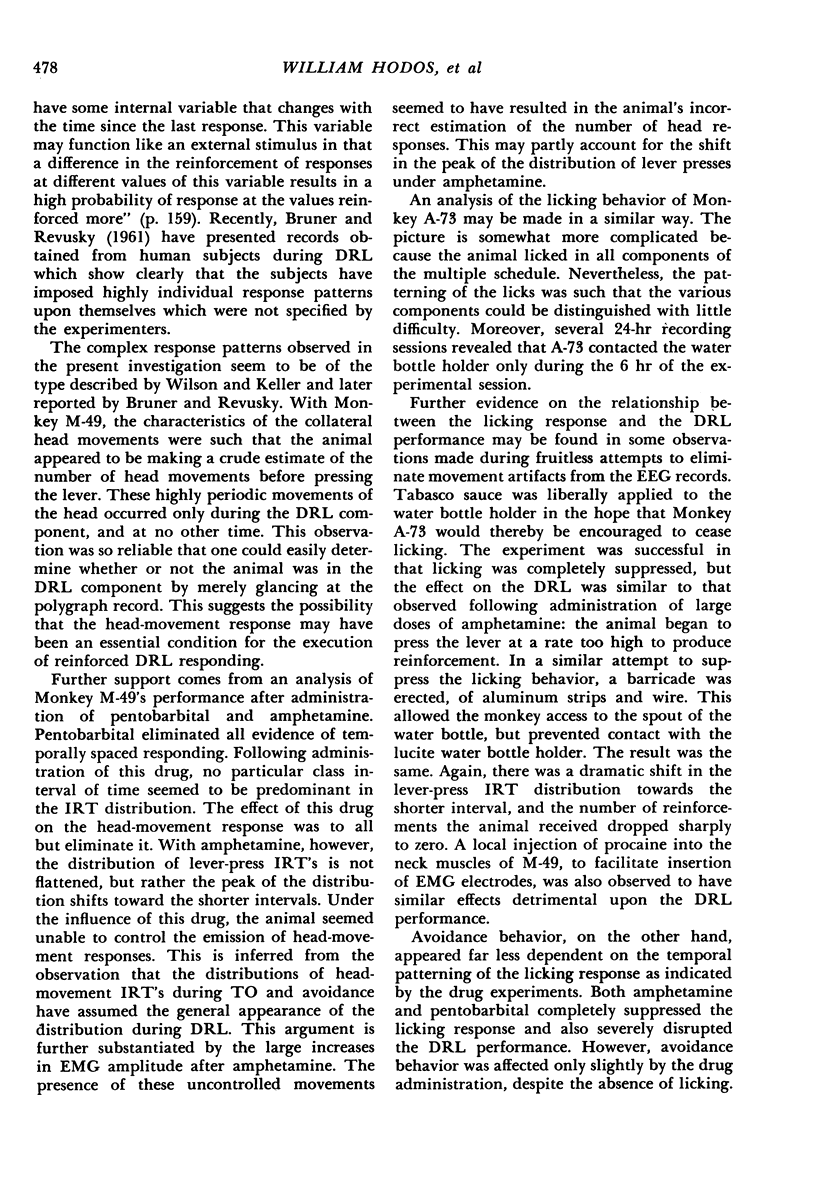
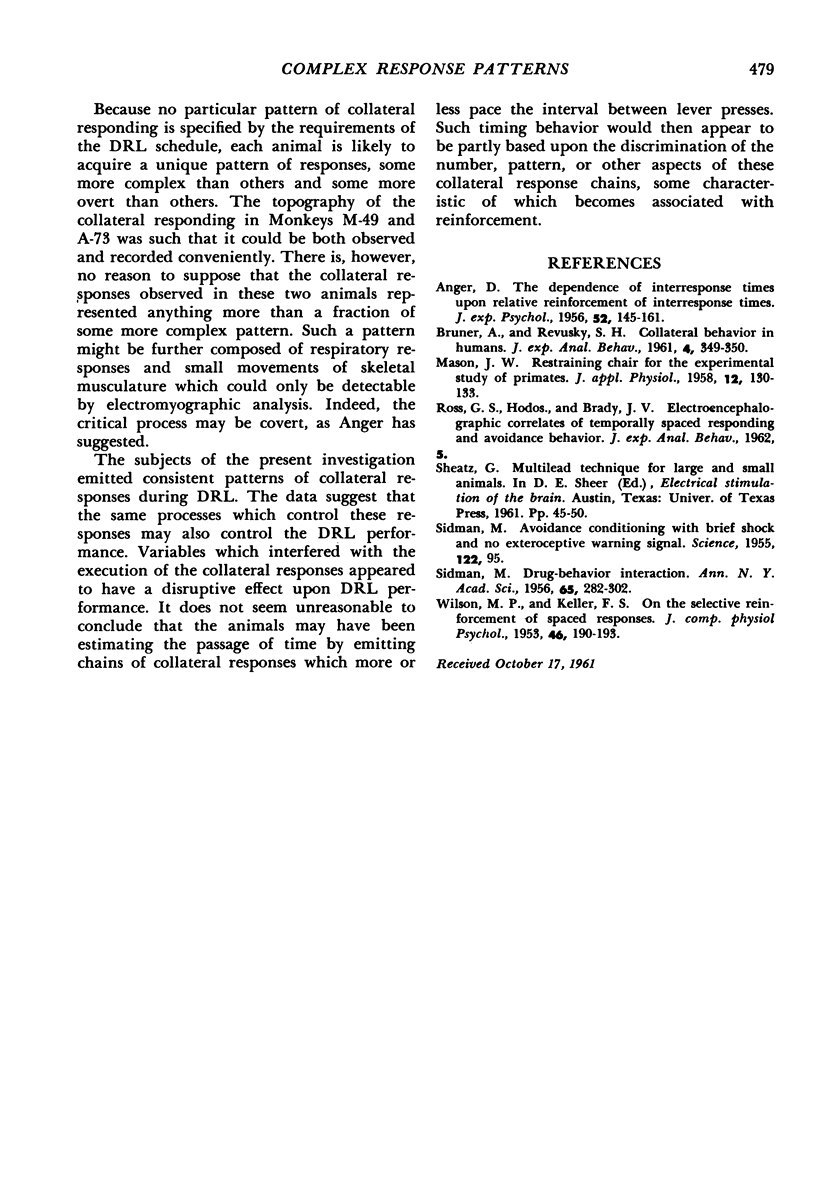
Selected References
These references are in PubMed. This may not be the complete list of references from this article.
- ANGER D. The dependence of interresponse times upon the relative reinforcement of different interresponse times. J Exp Psychol. 1956 Sep;52(3):145–161. doi: 10.1037/h0041255. [DOI] [PubMed] [Google Scholar]
- BRUNER A., REVUSKY S. H. Collateral behavior in humans. J Exp Anal Behav. 1961 Oct;4:349–350. doi: 10.1901/jeab.1961.4-349. [DOI] [PMC free article] [PubMed] [Google Scholar]
- MASON J. W. Restraining chair for the experimental study of primates. J Appl Physiol. 1958 Jan;12(1):130–133. doi: 10.1152/jappl.1958.12.1.130. [DOI] [PubMed] [Google Scholar]
- SIDMAN M. Drug-behavior interaction. Ann N Y Acad Sci. 1956 Nov 2;65(4):282–302. doi: 10.1111/j.1749-6632.1956.tb49640.x. [DOI] [PubMed] [Google Scholar]
- WILSON M. P., KELLER F. S. On the selective reinforcement of spaced responses. J Comp Physiol Psychol. 1953 Jun;46(3):190–193. doi: 10.1037/h0057705. [DOI] [PubMed] [Google Scholar]


